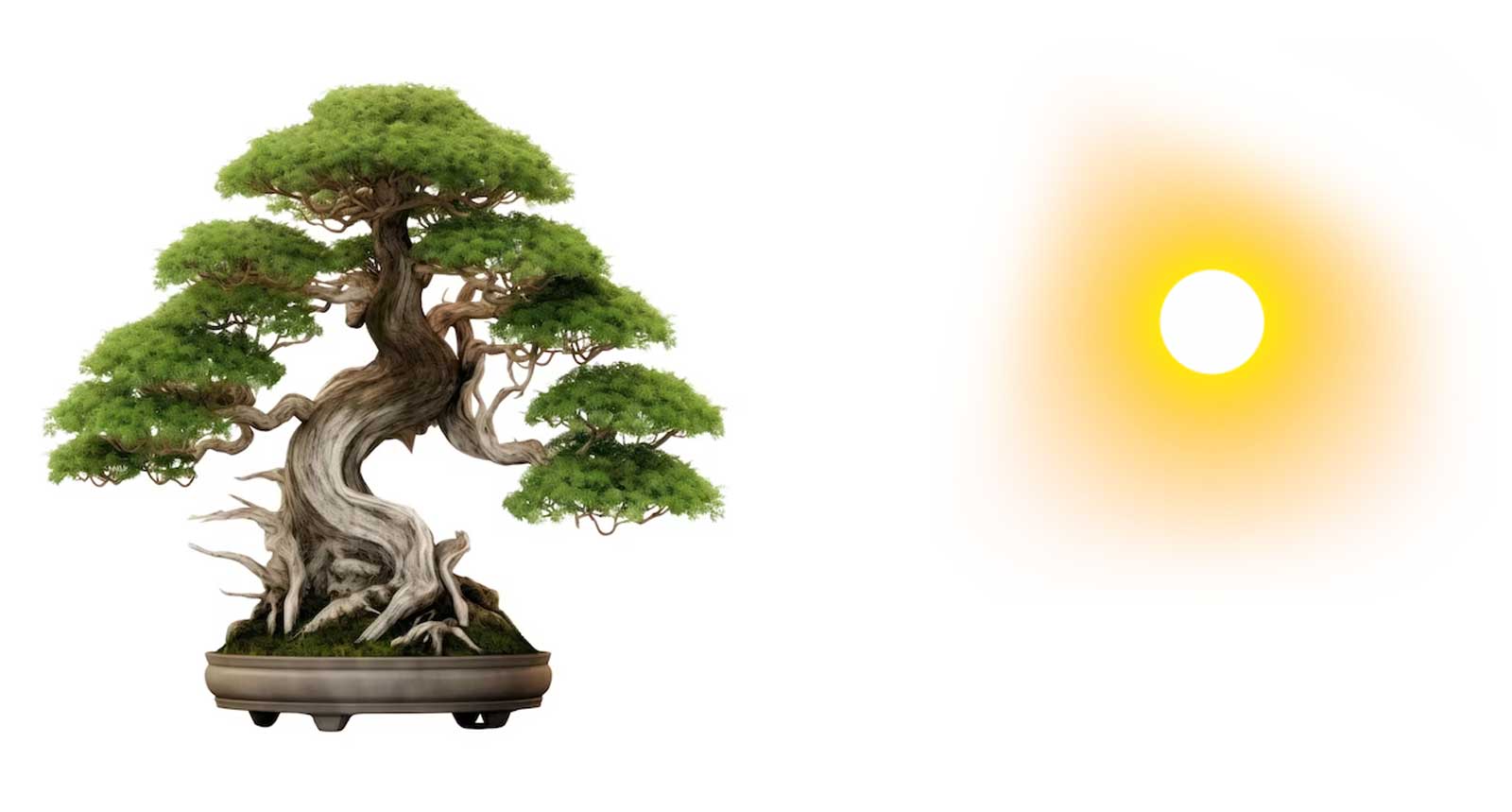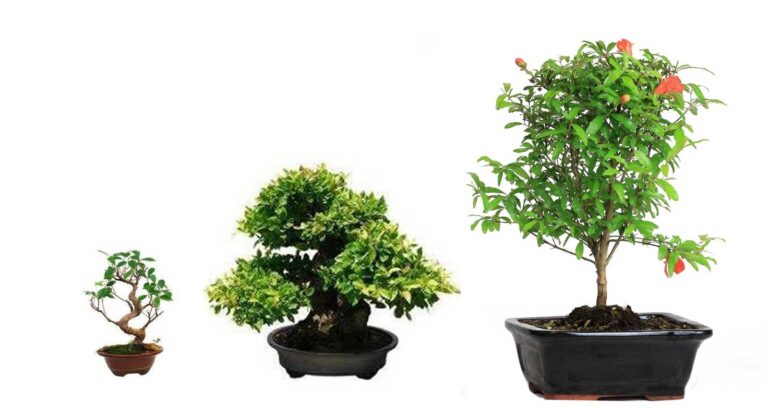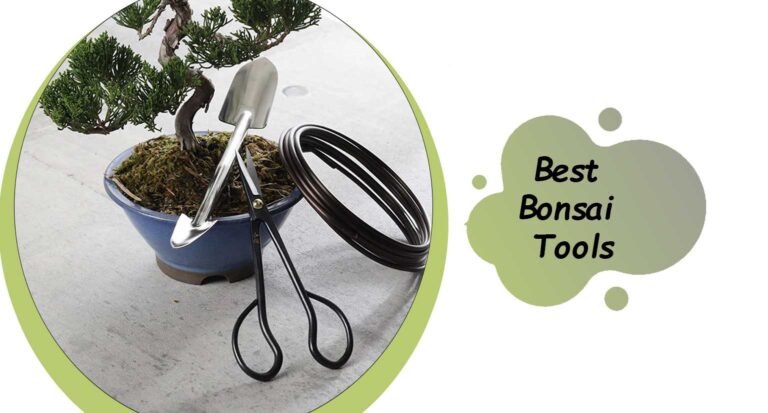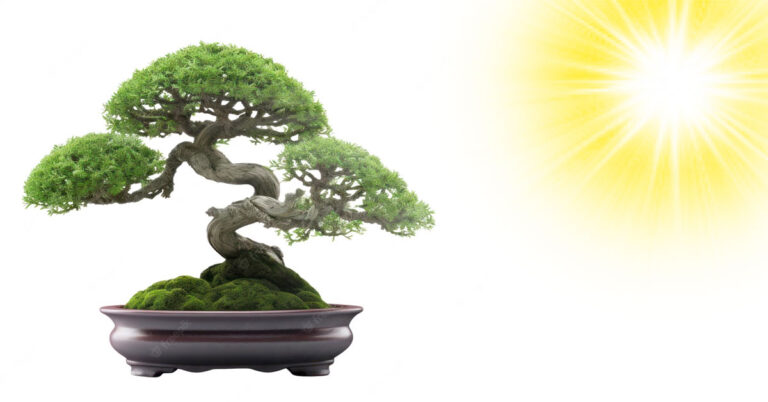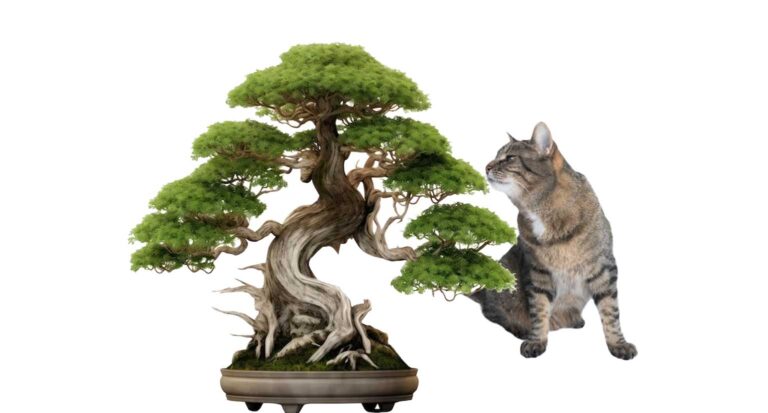Do Juniper Bonsai Trees Need Direct Sunlight?
It’s no secret that plants need light in order to survive and flourish. But, when it comes to bonsais, the question arises: do Juniper Bonsai trees need direct sunlight? This is an important question for any aspiring or experienced bonsai tree hobbyist because the wrong amount or type of light can have a huge impact on the health and longevity of your tree.
The short answer to this question is yes, Juniper Bonsai trees do need direct sunlight in order to thrive and survive.
However, it’s important to note that not all Juniper species are created equal when it comes to how much sunlight they need – some varieties are more tolerant of direct sunlight than others and require less of it.
Generally speaking, most varieties need at least 6-8 hours of direct sunlight each day during the Spring and Summer months when they are actively growing.
When temperatures begin to drop, they will need a bit less – approximately 4-6 hours of direct sunlight each day. It’s important to pay attention to the amount of sunlight your Juniper Bonsai tree is receiving and adjust accordingly if it seems to be too much or too little.
Signs that your tree is getting too much direct sunlight include wilting leaves, yellowing foliage, and stunted growth.
On the other hand, if your tree is receiving too little sunlight, you may notice the leaves starting to droop or curl up. keep reading, and we’ll discuss some other tips to ensure your Juniper Bonsai tree is getting the correct amount of sunlight.
Proper Sunlight Exposure for a Healthy Tree
As mentioned before, it’s important to monitor the amount of direct sunlight that your Juniper Bonsai tree is receiving in order to keep it healthy.
When you take your plant outdoors for sunlight exposure, make sure that it is not placed in an area that receives too much or too little light.
Additionally, be aware of the temperature – Junipers can only tolerate temperatures between 40 and 95 degrees Fahrenheit.
If you live in a region with intense sunlight during the summer months, you may need to provide some shade protection for your tree like a sun umbrella or other cover that will provide some relief from the heat.
You also should ensure that your tree is constantly hydrated during these months to prevent wilting – a slow and steady drip irrigation system would be ideal in this scenario.
Rotating Your Juniper Bonsai Tree
It’s important to rotate your bonsai tree often so that all sides of the tree receive equal amounts of sunlight. Rotating your Juniper Bonsai tree every two weeks will ensure that each side receives adequate light and maintains an even shape.
Consistently rotating your tree will also give it a full, rounded look since individual branches can be given more exposure to the sunlight this way.
Do Juniper Bonsai Trees Need Direct Sunlight?
Proper care for your Juniper Bonsai tree entails ensuring it receives an adequate amount of direct sunlight. This factor holds utmost importance in maintaining its overall health and vitality.
Sunlight provides nourishment and energy for the plant’s growth, as well as helping to keep it healthy and vibrant. But how much direct sunlight do Juniper Bonsai trees need?
The answer depends on the time of year. Juniper Bonsai trees need approximately 6-8 hours of direct sunlight per day during the Spring a Summer months.
During the Fall and Winter, this amount should be reduced to around 4-6 hours a day. It is also important to note that direct sunlight during the hottest part of the day (around noon) should be avoided, as it can cause damage to your tree’s foliage.
Understanding your Juniper Bonsai tree starts with getting to know the broader Juniper tree category. Junipers, belonging to the genus Juniperus, are an extensive crowd of around 70 species, including popular ones like Juniperus communis, Juniperus sabina, and Juniperus chinensis. Each species has its unique needs and characteristics.
The Japanese Needle Juniper, or Juniperus rigida, is an exotic specimen with sharp, needle-like foliage that demands careful handling.
Its unique aesthetic makes it a valuable addition to any bonsai collection. The Sierra Juniper, Juniperus occidentalis, a North American native, is another sought-after variety. It is known for its thick, scalloped bark and blue-green foliage.
Each Juniper Bonsai tree species has its own sunlight requirements, watering needs, and optimal care conditions.
Therefore, identifying the exact species you have at hand is cardinal to offer it the appropriate care and help it thrive.
Light
Once you have identified the exact species of Juniper Bonsai tree in your care, you can set up its light requirements accordingly.
Generally, outdoor-grown Juniper Bonsai trees should be kept outdoors and receive plenty of natural sunlight each day.
On the other hand, indoor-grown bonsais need more protection from direct light and should be moved to a shaded spot during the hottest part of the day (around noon).
It is important to note that Juniper Bonsai trees do not appreciate too much light. If your tree is located outdoors, it should be situated in an area with partial shade: an east or west-facing spot will provide the right amount of sunlight for your bonsai’s needs.
Shade cloths and other materials can also be used to create a partial shade environment for an outdoor Juniper bonsai tree.
Sunlight
Juniper Bonsai trees are sun-loving plants that thrive best under full sun to partial shade conditions. They generally require about 4 to 6 hours of direct, unfiltered sunlight each day.
However, the intensity of the sunlight should be monitored closely, especially during summer months when the sun is at its peak.
Overexposure to direct sunlight can lead to sunburn, which presents as yellowing or browning of foliage, and in severe cases, can cause the tree to dry out and die.
If you notice that your Juniper Bonsai tree’s leaves are turning yellow or brown, it may be a sign of sunburn. In this case, gradually move your tree to a location where it can receive dappled sunlight or partial shade, especially during the hottest parts of the day.
For indoor Juniper Bonsai trees, place them near a south or west-facing window where they can receive plenty of indirect sunlight.
If natural light is insufficient, a fluorescent grow light can be used to supplement the plant’s light needs. Adjust the distance and duration depending on the bonsai’s response to the light source.
Indoor vs Outdoor Placement
When deciding between indoor and outdoor placement for your Juniper Bonsai tree, keep in mind that it’s a species accustomed to outdoor environments.
They thrive best in areas mimicking their natural habitat, with plentiful indirect sunlight and fluctuating temperatures.
Placing your Juniper Bonsai tree outdoors allows it to get plenty of indirect sunlight while protecting it from the harsh midday sun.
Additionally, the natural changes in weather and temperature outdoors can stimulate the tree’s growth and contribute to its overall health.
However, you can keep a Juniper Bonsai tree indoors, provided it gets sufficient light and is cared for appropriately.
Place your tree near a south or west-facing window where it can receive ample indirect sunlight. Remember, even indoors, protect it from intense direct sun that can cause leaf burn. Consider using a humidity tray under your tree indoors as junipers prefer a bit of humidity.
In both indoor and outdoor scenarios, maintaining the balance of light is key. Too much direct sunlight can be harmful, while too little light can hinder growth and vitality.
Remember, every tree is unique and may require slight adjustments to these general guidelines, so keep a close eye on your tree’s health and adjust your care routine as needed.
Temperature and Climate Conditions
Juniper Bonsai trees are highly versatile and can tolerate a wide range of temperatures, making them ideal for various climates.
They do well in cooler climates, withstanding temperatures as low as -10 degrees Fahrenheit, provided they are given adequate protection.
During the winter months, it’s advisable to shield your tree from harsh winds and heavy snow, which could damage the branches and foliage.
In warmer climates, Juniper Bonsai trees can thrive in temperatures up to 104 degrees Fahrenheit. However, during the peak of summer, they require a bit more attention.
You should ensure they get ample water and are placed in a location that provides a good balance of shade and indirect sunlight to prevent leaf burn.
Remember, abrupt changes in temperature can be detrimental to your tree, so it’s crucial to acclimatize it gradually when moving it between indoors and outdoors or when changes in seasons occur.
Bear in mind, these temperature and climate guidelines are general and may vary depending on the specific variety of Juniper Bonsai tree you have.
As always, monitoring your tree’s health and response to different climates will guide you in providing the optimal care it needs.
Watering
Juniper Bonsai trees should be watered whenever the topsoil looks dry, which is usually once or twice a week. A good way to identify when it’s time to water your tree is by gently pressing the soil with your finger. If the soil feels dry, then it’s time for watering.
During the hot summer months, your tree will require more frequent watering than it does in cooler climates. To ensure your plant is getting adequate moisture, use a misting bottle to spray its foliage on a daily basis or set up an irrigation system that waters your tree automatically.
You should avoid overwatering as too much water can cause root rot and could eventually kill your tree. If you notice emerging yellowing leaves or soil that’s too moist, it’s likely that you’re over-watering and need to cut back on the amount of water you’re providing.
Humidity
Juniper Bonsai trees prefer a humid environment, so it’s important to maintain high levels of humidity around your plant.
This can be achieved through misting the foliage with water every few days or by using an electric humidifier in its vicinity.
Also, you should consider placing your Juniper bonsai tree near other plants or running household fixtures such as showers and sinks to create natural steam. This will ensure that your Juniper bonsai tree receives the proper levels of humidity it needs to thrive.
Soil
The best soil for Juniper Bonsai trees is one with excellent drainage which prevents root rot and fungal growth.
A suitable soil mixture usually consists of a combination of organic material, such as compost or peat moss, and inorganic materials like perlite or pumice.
It’s important to change the soil mix every two years or so as the nutrients will eventually diminish over time. Additionally, your tree needs frequent pruning and trimming which should be done every month or so to maintain its shape and health.
Drainage
Drainage is essential for a healthy Juniper Bonsai tree, so it’s important to use a pot with drainage holes to keep the roots from becoming waterlogged.
You can further ensure proper drainage by adding more inorganic material such as perlite or pumice to the soil mix.
Also, you should allow your tree some time between waterings to ensure excess moisture is allowed to evaporate and not sit in the soil. This will help maintain healthy levels of oxygen in the soil which are essential for the health of your plant.
Fertilizer
Juniper Bonsai trees require regular fertilizer applications in order to maintain their growth and stay healthy. It’s best to use a balanced, water-soluble fertilizer with an N-P-K ratio of 10-10-10 that’s applied every two weeks while the tree is actively growing.
During winter months, you should reduce or stop fertilizer applications and focus on providing adequate moisture to your tree.
When fertilizing your Juniper Bonsai Tree, always make sure to dilute the fertilizer before application as too much can burn the roots and cause foliage discoloration.
Feeding
Feeding your Juniper Bonsai tree involves supplying it with the necessary nutrients, which is essential for its growth and health.
The Juniper Bonsai tree is not a heavy feeder but requires a balanced diet of Nitrogen (N), Phosphorous (P), and Potassium (K).
This can be achieved using a balanced, slow-release granular or liquid fertilizer with an N-P-K ratio of 10-10-10, applied once every two weeks during the active growth period.
In the dormant winter months, it is advisable to reduce or even cease feeding, focusing instead on maintaining adequate moisture levels.
Before any feeding session, ensure the soil is damp. Applying fertilizer to dry soil can potentially harm the tree by burning the roots and causing foliage discoloration.
Pruning
Pruning is a vital aspect of maintaining the visual appeal and health of your Juniper Bonsai tree. This process involves the careful removal of unnecessary or overgrown branches and foliage, allowing the tree to focus its energy on new growth.
Pruning should ideally be done during the tree’s active growing period, which usually falls in the spring and summer months.
One key factor to consider while pruning is ensuring that you don’t remove all the tree’s new growth, as this is where the tree gets its energy for photosynthesis. Instead, focus on shaping the tree to your desired aesthetic while maintaining a balanced and healthy growth pattern.
Shaping
Shaping is an integral part of cultivating a Juniper Bonsai tree, transforming it from a simple plant into an artistic representation of nature in miniature.
Shaping involves strategically controlling the direction and form of the tree’s growth using techniques like wiring and branch selection.
To begin with, you’ll need to decide on the style you want your bonsai to adopt. Traditional styles include the informal upright, the formal upright, the slanting, the cascade, and the semi-cascade. Each style presents its unique aesthetic and challenges.
Next, wire the tree to guide its growth. Start by wrapping annealed copper or aluminum wire around the branches.
The size of the wire should be about one-third the thickness of the branch. It’s important to wrap the wire carefully to avoid damaging the bark.
Once wired, you can start shaping the branches by bending them gently into your desired position. It’s important not to force the branches as this can cause them to break. Instead, carefully and gradually shape the bonsai to prevent any damage.
Health and Care
The health of your bonsai is highly dependent on adequate sunlight. Juniper Bonsai trees need direct sunlight for a minimum of 4 hours per day.
This will encourage healthy photosynthesis and promote new growth in the tree. However, you should take precautions against exposing it to too much sun as this can cause scorching on its leaves.
In the warmer months, you should move your Juniper Bonsai tree outdoors for some fresh air and sunlight. However, in winter when temperatures are colder, you should keep it indoors to protect it from frost damage.
It’s also important to provide your bonsai with adequate water and nutrients. Depending on its age and size, a Juniper Bonsai tree should be watered once or twice a day.
You can use a mister bottle to gently spray the foliage and soil with water, taking care not to over-water it. Don’t forget to check the humidity of your bonsai regularly too .Make sure you’re using the appropriate nutrients to feed your bonsai.
Disease Management
A well-cared-for Juniper Bonsai tree is generally resistant to diseases. However, improper watering, sunlight, or temperature conditions can make your tree susceptible to certain diseases and pests. These include mold, rust, aphids, and scale insects.
Mold is often the result of over-watering or insufficient light. If you notice a fuzzy white substance on your tree, it may be a sign of mold. You can treat this by reducing watering and ensuring your bonsai receives adequate light.
Rust, a common issue in many plants, can be identified by orange or brown spots on the leaves. Managing it requires removing the affected areas and applying a suitable fungicide.
Aphids and scales are small insects that can be detrimental to your Juniper Bonsai tree. They can be removed manually or by applying an insecticide specifically designed for bonsai trees.
Foliage
The foliage of the Juniper Bonsai tree is another significant aspect to consider while caring for the tree. These trees possess needle-like foliage that can vary in color from deep green to blue-green, depending on the variety. The dense, lush foliage is one of the tree’s defining characteristics, making it a beautiful addition to any garden.
To maintain the vibrant, healthy foliage, it is crucial to ensure the tree is receiving an appropriate balance of sunlight and water.
Too much sunlight can cause the foliage to become scorched and discolored, while insufficient sunlight can lead to the foliage turning yellow and dropping off the tree. It’s a delicate balance that requires careful monitoring and adjustment.
If your Juniper Bonsai tree’s foliage starts to brown or discolor, it could be a sign that the tree is not receiving the right balance of sunlight or water.
Adjustments to its care routine, such as moving the tree to a location with more suitable sunlight, or moderating the watering frequency, can help restore the foliage’s health and beauty.
Special Care in Different Seasons
Different seasons pose distinct challenges for the upkeep of your Juniper Bonsai tree and call for specific care routines.
In summer, the scorching heat and intense sunlight can stress the tree. While it’s crucial that your bonsai receives adequate sunlight, direct exposure to harsh summer sun can cause foliage scorching.
Consider moving the tree to a location with morning sun and afternoon shade during this season. Also, ensure to water your juniper more frequently, as the heat increases evaporation and the tree may dry out faster.
Fall is the time when your bonsai prepares for the dormant winter period. It’s essential to reduce watering during this season as the tree’s water needs decrease.
However, this doesn’t mean completely stopping the watering process. Monitor the tree for any signs of water stress and adjust accordingly.
During winter, your Juniper Bonsai goes into a period of dormancy. It’s vital to protect it from extreme temperature fluctuations, especially freezing conditions that can damage the root system.
Consider moving your bonsai to a sheltered location, like a cold frame or unheated garage, to provide some protection from harsh winter conditions.
As spring arrives, your bonsai will start growing actively again. This is the ideal time to repot and/or prune your plant. Remember, the tree will require more water as the weather warms and new growth begins.
With attentive and seasonally appropriate care, your Juniper Bonsai tree will remain a vibrant, beautiful feature in your garden throughout the year.
Conclusion
In conclusion, while Juniper Bonsai Trees do require exposure to sunlight, the intensity and duration of such exposure should be carefully monitored to prevent any potential damage.
Understanding your tree’s needs and adapting your care routine to the changing seasons are key to maintaining its health and vitality.
Always remember, the beauty of your bonsai is a reflection of the care and love you put into it. So, with a bit of attention and understanding, your Juniper Bonsai Tree will be an enduring, charming part of your garden, keeping you in touch with nature’s ebb and flow throughout the year.

